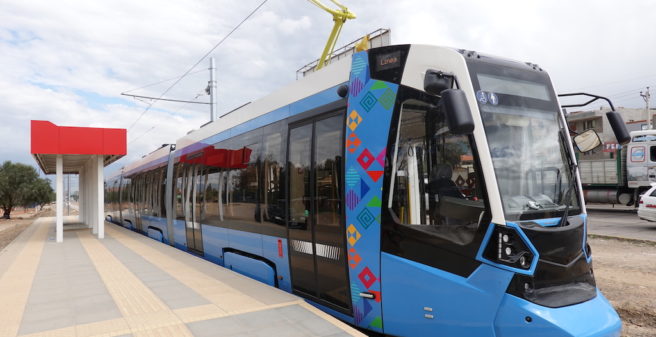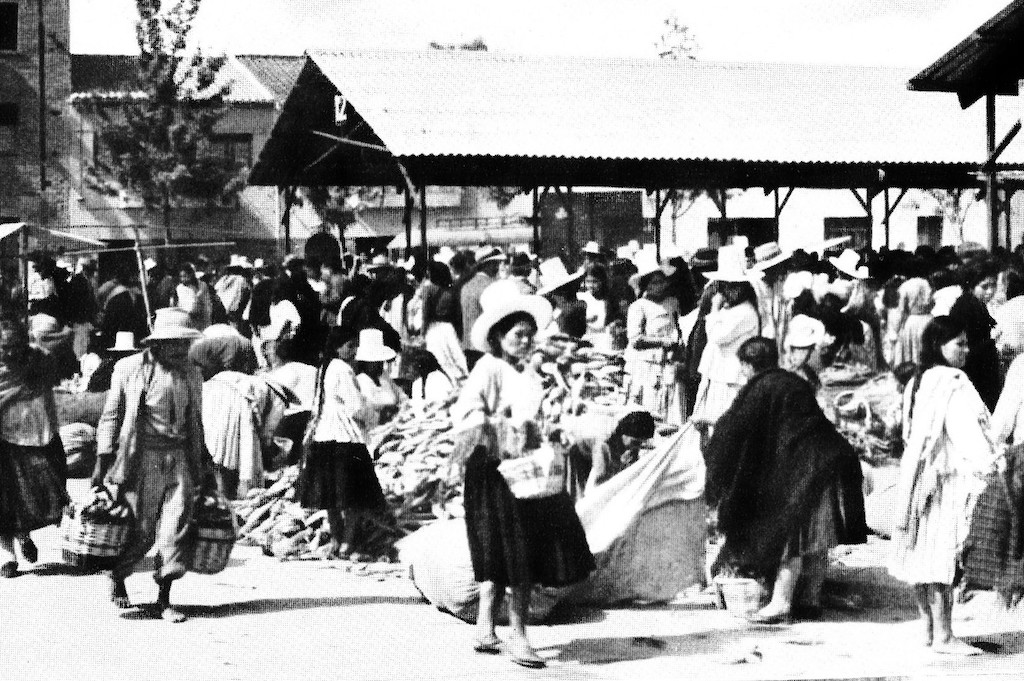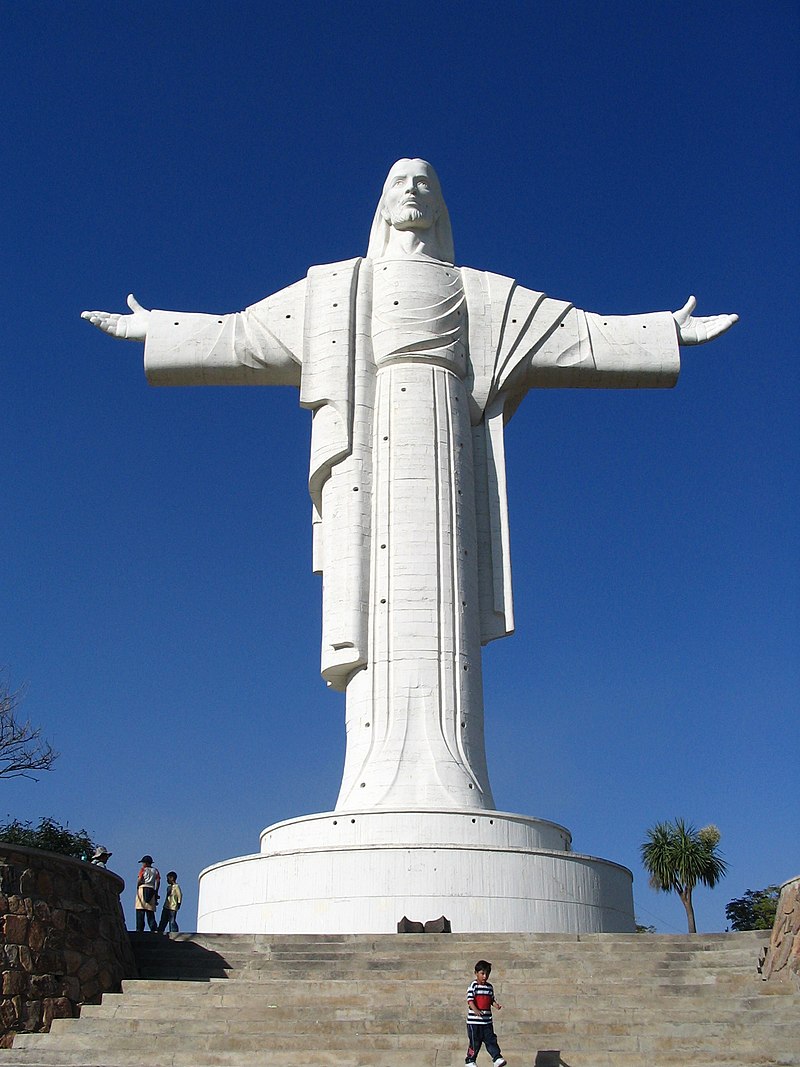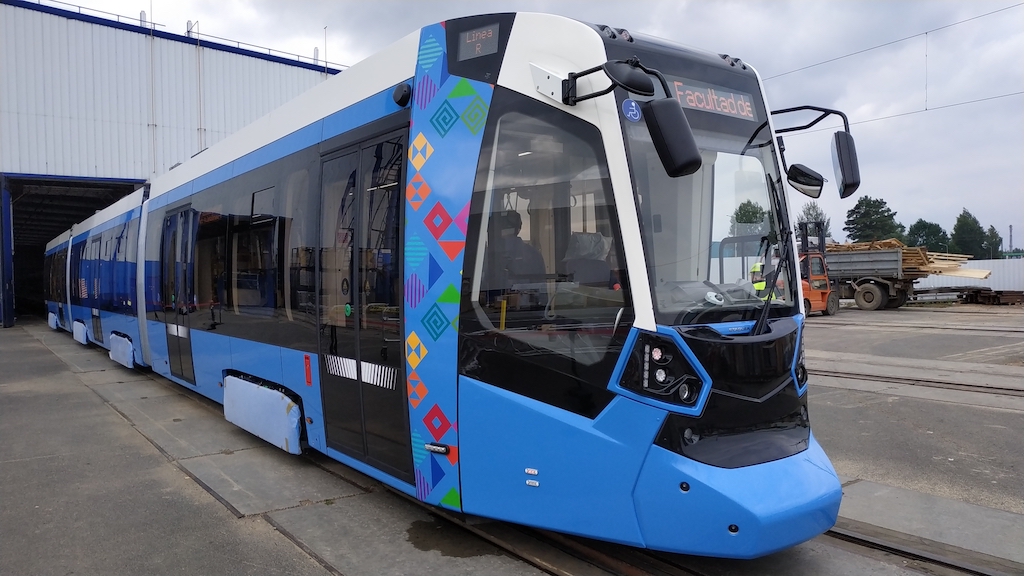
In my childhood my attention was drawn to the city of Cochabamba in the highlands of Bolivia through a book by Erich Wustmann [1]. Erich Wustmann (1907-1994) was a well-known ethnologist and wrote books worth reading about his travels, which in the GDR were so-called stumbling blocks (i.e. they were mostly sold under the counter). An exhibition about his life’s work still dominates the museum in his home town of Bad Schandau today. The museum is very close to the “Kurpark” stop, the starting point of the Kirnitzschtalbahn.
Wikipedia only provides population figures for Cochabamba from 1973. At that time, a census resulted in the number 184,156. The last census in 2012 showed the rapid increase to 630,587 inhabitants within about 30 years. Current figures speak of 1 million inhabitants, but in the entire Cochabamba area.
Certainly the values during Wustmann’s trip were still well below 180,000, he does not give us any figures. At that time there was also no today’s landmark, the approx. 260 m high figure of Christ “Christo de la Concordia”, which was only built on the occasion of a visit by Pope John Paul II.
Instead, Wustmann describes a tranquil provincial town with an airport and an almost continuously paved trunk road number 4 as a connection to La Paz. There are hardly any tourists. He describes the social contrasts between the white upper class and the highland Indians, the first social measures and the poor hygienic conditions that prevailed in the city and the surrounding area at that time. Only the mountain air (the plateau of Cochabamba is approx. 2500 m above sea level) and the almost unrestricted solar radiation that provides UV-light would prevent epidemics from breaking out. Wustmann described the sterilizing effect of UV-light as early as 1964. Today, during the Corona crisis, we read again and again in the media about new disinfection devices that are based on this effect of UV- light. For some time now, trains for Russia have been fitted with air conditioning systems in which the supply air is disinfected using UV- light.
Picture gallery (please click to open):

Left: Market in Cochabamba in the early 1960s, from [1] 
Right: Christ stature, © I. Anakin, Wikipedia, 2005
The development of the Metelitsa low-floor tram
Now I am making a very big leap in time, right up until shortly before my retirement. Stadler bundled its tram know-how and developed a prototype of a 100% low-floor vehicle in Minsk for the former CIS countries. I was able to contribute my experiences from the Swiss tangos there. I reported on this process in detail in [2]. The vehicle should be equipped with conventional bogies that can be swiveled out from under the end wagons in view of the often very poor track positions, which are subject to strong twisting. The intermediate car of the prototype was short and had only one chassis. The power converters were developed and produced in Minsk. Of course, the price of the vehicle had to correspond to the possibilities of these countries. Our colleagues from Minsk had a lot of good ideas here. Metelitsa (Belarusian for snowstorm) was chosen as the marketing name. With the Tango, the prominently advanced front apron determined the appearance. This serves to prevent accidents. If, tragically, a pedestrian should be caught by a train, he should be captured below his center of gravity. It is not knocked down and rolled over, but thrown upwards (simulation see picture). The suitability of this construction principle has been proven in practice, transferred to the Metelitsa and described in detail in a specialist article [3].
From Belarus to Bolivia
Since the oil price fell to a completely unexpected extent in the following period, orders could not be won in the CIS countries to the extent that was actually expected. We were particularly pleased about an order for 23 trams for St. Petersburg. The intermediate car was changed according to the requirements: It was lengthened for this order and received two rotating bogies.
In 2018 twelve Metelitsa-trams, very similar to the version for St. Petersburg, were sold for the new “tren metropolitano” light rail system in Cochabamba (Boliven). U.a. the gauge had to be adjusted from broad gauge – 1526 mm (St Petersburg) to standard gauge – 1435 mm.
Cochabamba is hardly reminiscent of the city of 1960. Nowadays the city is literally stifling in traffic, so that the Bolivian state commissioned the first light rail system in this country as a turnkey complete service for this metropolitan area. The execution lies with the Asociatión Accidental Turani, which was founded by the Spanish construction group JOCA and the Swiss company Molinari. The Molinari company was primarily responsible for railway technology (vehicle procurement, signaling technology, communication, etc.). As already mentioned, Stadler Minsk became the vehicle supplier. In 2019 Christeller reported in Urban Transport Magazine [5] on the status of this project, which at that time was still in line with the plans. The route network consisting of (42,7 km) three lines is also presented in this article:
Afterwards, then President Evo Morales was forced to abdicate in Bolivia, and Luis Arce from the same left- wing MAS party won the new election in October 2020 in the first ballot. The corona pandemic also significantly impaired further work progress, there was a strict lockdown in Bolivia over several months.

On December 4, 2020, President Arce and his Minister for Public Buildings visited Cochabamba Iván Arias Durán underlined Bolivia’s further interest in the light rail project. The other dates were fixed as follows:
- Completion of the Linea Roja y Verde (red and green): December 2021
- Completion of the Linea Amarilla (yellow): mid-2022
An extension of the yellow line to Sacaba is already being discussed. Stadler Minsk has already delivered seven Metelitsa vehicles to Cochabamba. The first test drives could already take place on a completed, 2 km long section (photo). The remaining five vehicles are ready for transport, but are still at the plant in Fanipol (Belarus). Metelitsa – Snowstorm actually fits the vehicles for Cochabamba in this project due to the climate. But the Belarusian language helps in this situation. Metelitsa also describes a folk dance, and dancing certainly goes much better with such a great transport solution in this country.

Summary
Literature:
[1] Wustmann, E.: Indos in the highlands of the Cordillera. Neumann Verlag Radebeul 1964 (German)
[2] Iwainsky, H.: On the art of building a train. Self-published, Jenbach 2018 (German)
[3] Keller, T.; Wiesent, N.; Iwainsky, H.: On the accident behavior of trams. EI – Der Eisenbahn-ingenieur 69 (2018) 4, pp. 50-55 (German)
[4] AGU Zurich: Analysis of a planned tram front in relation to accidents involving tram people, Zurich 2013 (German) [5] Christeller, R.: Progress in the construction of the light rail Cochabamba-Bolivia. Urban-Transport Magazine 2019

